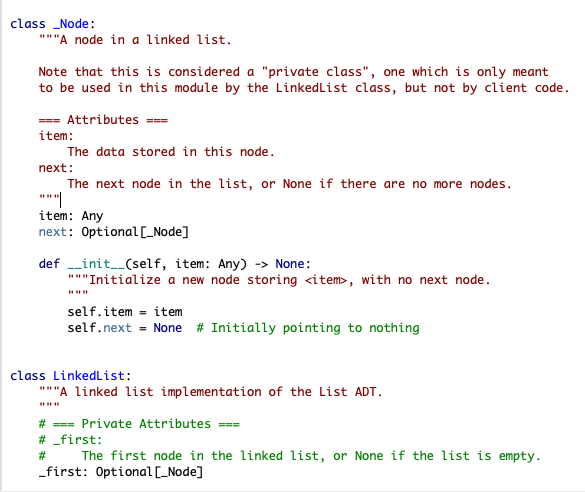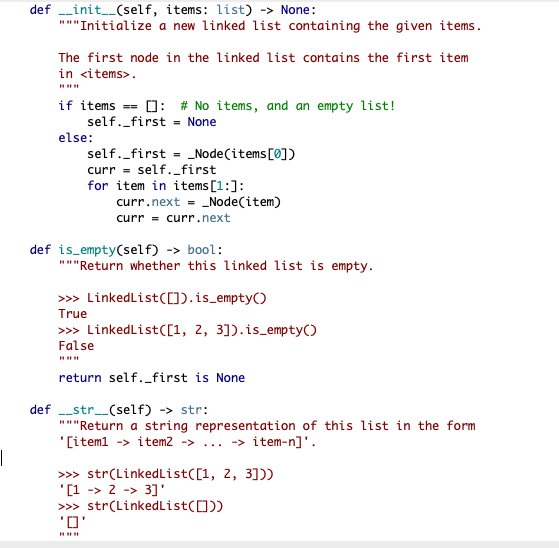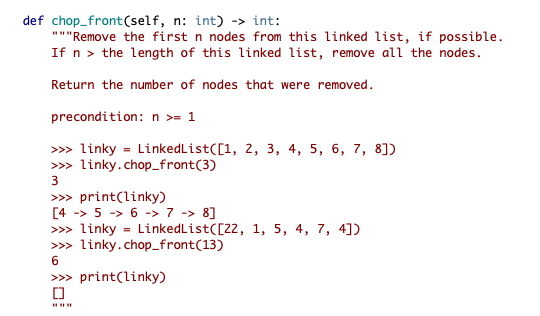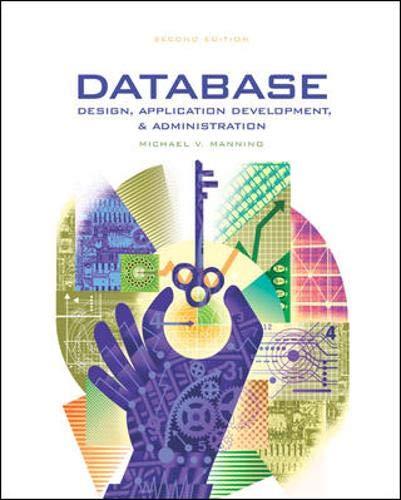Answered step by step
Verified Expert Solution
Question
1 Approved Answer
please help to write the function body for chop_front class _Node: A node in a linked list. Note that this is considered a private class,



please help to write the function body for chop_front
class _Node: ""A node in a linked list. Note that this is considered a "private class", one which is only meant to be used in this module by the LinkedList class, but not by client code. Attributes item: The data stored in this node. next: The next node in the list, or None if there are no more nodes. item: Any next: Optional [_Node] def __init__(self, item: Any) -> None: ""Initialize a new node storingStep by Step Solution
There are 3 Steps involved in it
Step: 1

Get Instant Access to Expert-Tailored Solutions
See step-by-step solutions with expert insights and AI powered tools for academic success
Step: 2

Step: 3

Ace Your Homework with AI
Get the answers you need in no time with our AI-driven, step-by-step assistance
Get Started


